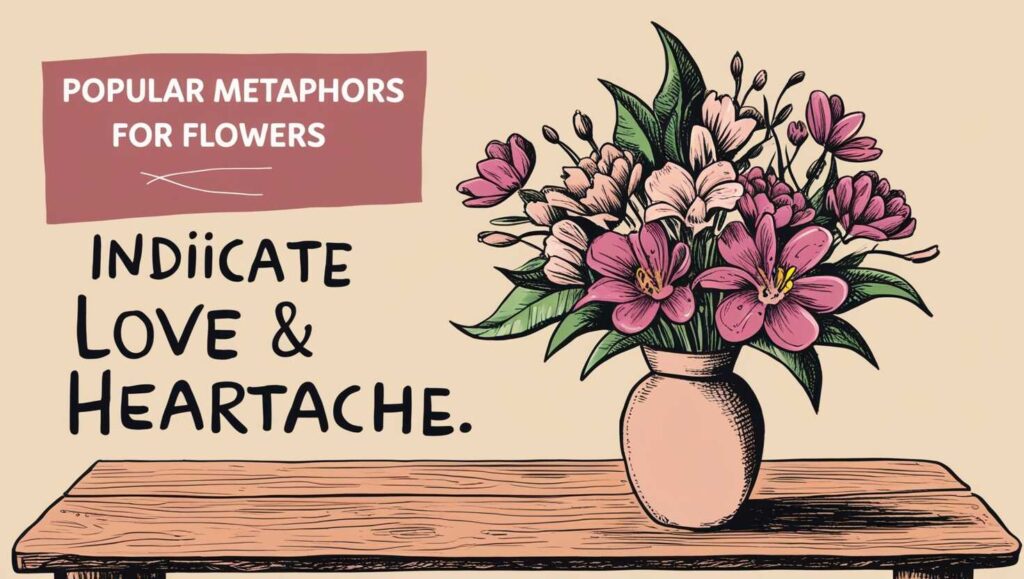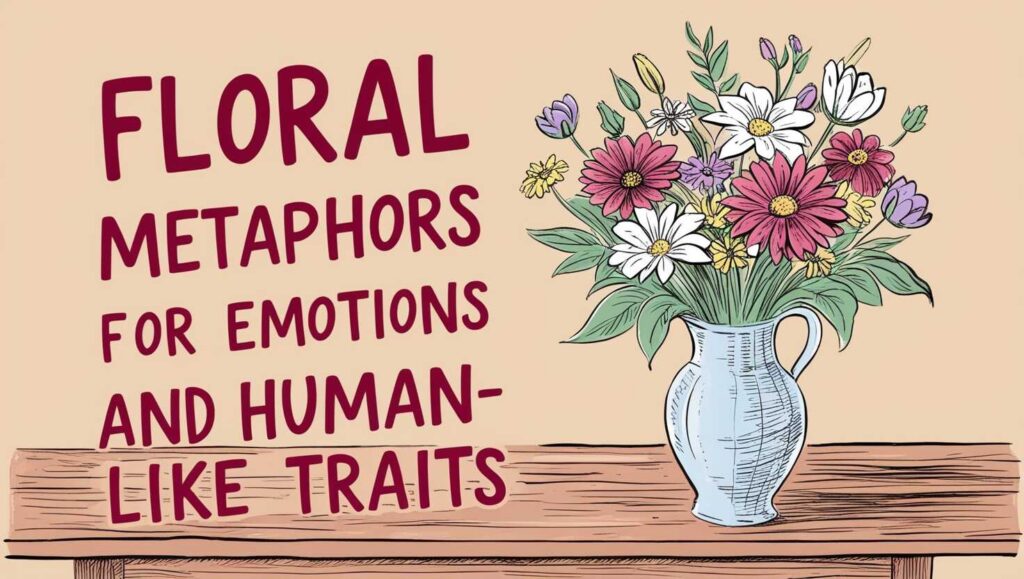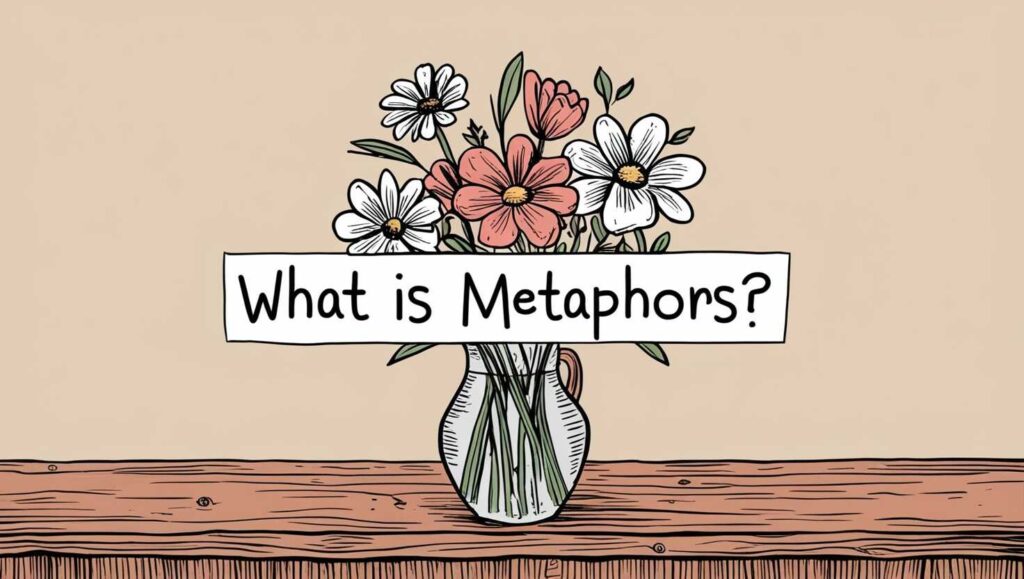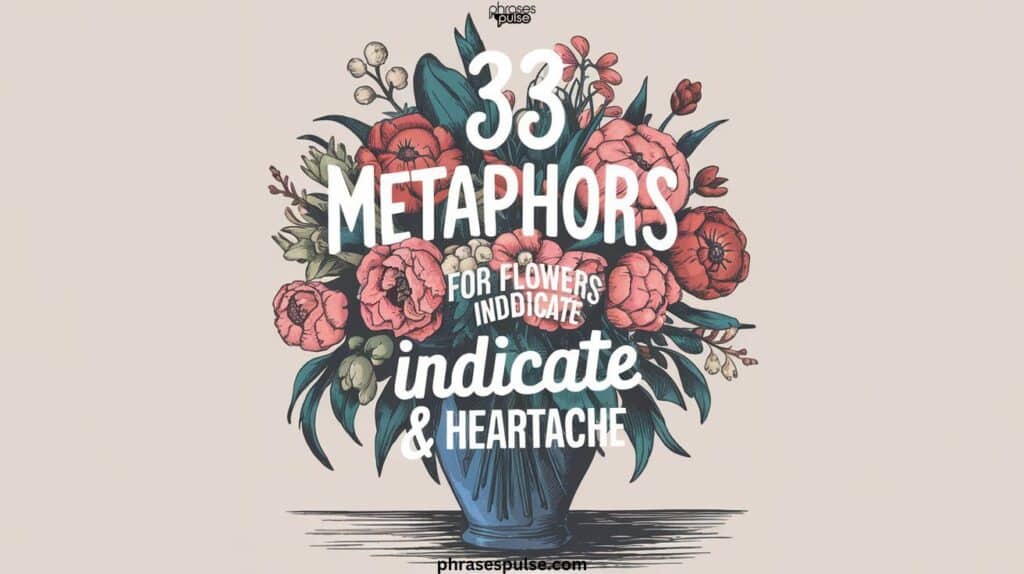Flowers are nature’s way of showing emotion, with blooms that speak to the heart and soul. These metaphors for flowers not only reflect beauty but also carry deep feelings of love, heartache, and the essence of life itself. From the jewels of the garden to the soft whispers of beauty, flowers have been used as powerful symbols in poetry, art, and daily life.
In this article, we’ll explore flower metaphor that reflect love, loss, and everything in between. You’ll also learn how to weave these flower expressions into daily conversations to add a poetic touch to everyday language.
Flowers, in all their diverse forms and vibrant colors, have long been associated with human qualities. They serve as symbols of care, tokens of admiration, and expressions of affection. From human-like traits to emotional expression, flowers mirror the complexities of our lives. Whether you view them as the stars of the earth or the laughter of the garden, each metaphor tells a story of nature’s beauty and fragility.
Popular Metaphors for Flowers Indicate Love & Heartache

Flowers capture love and heartache perfectly. When we speak of roses as the kisses of spring, we see them as symbols of romance. On the other hand, wilting flowers can represent sorrow or loss, reminding us of the fragility of emotions. Here are 33 metaphors for flowers that help express different feelings. Each one paints a picture, allowing us to convey complex emotions in simple ways.
Metaphors for Flowers as Expressions of Beauty and Love
| Metaphor | Meaning | Example |
|---|---|---|
| Stars of the Earth | Flowers brighten landscapes like stars. | “The daisies are the stars of the earth.” |
| Whispers of Beauty | Flowers as soft, gentle beauty. | “Their petals are whispers of beauty in the garden.” |
| Jewels of the Garden | Flowers as precious parts of nature. | “Roses are the jewels of the garden.” |
| Kisses of Spring | Blooms representing new love and romance. | “Tulips feel like kisses of spring after a long winter.” |
| Dreams of the Meadow | Flowers symbolizing hope and aspiration. | “Wildflowers are the dreams of the meadow.” |
| Nature’s Smiles | Flowers as symbols of joy and positivity. | “Dandelions are nature’s smiles.” |
| Expressions of Love | Flowers as tokens of admiration. | “A red rose is the classic expression of love.” |
Floral Metaphors for Emotions and Human-Like Traits

| Metaphor | Meaning | Example |
|---|---|---|
| Laughter of the Garden | Blooms that bring happiness and joy. | “Sunflowers are the laughter of the garden.” |
| Nature’s Voice | Flowers as expressions of the earth’s beauty. | “Lilacs are nature’s voice in spring.” |
| Garden’s Joy | Flowers representing cheer and liveliness. | “The blooming tulips are the garden’s joy.” |
| Floral Sentiments | Flowers carrying heartfelt emotions. | “Peonies are full of floral sentiments.” |
| Human Symbolism in Flowers | Flowers mirroring human emotions and qualities. | “The orchid’s resilience is a symbol of human strength.” |
| Anthropomorphic Flowers | Flowers showing human-like traits. | “The daisy has an innocent face, an anthropomorphic flower.” |
| Tokens of Admiration | Flowers symbolizing appreciation or respect. | “Lilies are often given as tokens of admiration.” |
Nature’s Symbols and Life’s Renewal
| Metaphor | Meaning | Example |
|---|---|---|
| Stars of the Garden | Flowers as jewels, like stars in the night sky. | “The violets are stars of the garden.” |
| Earth’s Gems | Flowers as natural treasures and jewels. | “Poppies are among the earth’s gems.” |
| Signs of Renewal | Blooms representing life’s new beginnings. | “Cherry blossoms are clear signs of renewal.” |
| Floral Protectors | Flowers as guardians of the ecosystem. | “Lavender fields are floral protectors of the soil.” |
| Season’s Renewal | Blooms that symbolize the cycle of seasons. | “Lilies are the season’s renewal each year.” |
| Guardian of Beauty | Flowers as caretakers of natural elegance. | “Roses are the guardian of beauty in the garden.” |
| Earth’s Brightness | Flowers as brightening agents in nature. | “Sunflowers are earth’s brightness in a field.” |
These blooming metaphors carry unique meanings that speak to our emotions. Flowers, like the radiant landscape around us, serve as metaphors for beauty, love, and sometimes sadness. From human symbolism to nature’s jewels, they connect deeply with our experiences.
How Apply These Metaphors for Flowers in Daily Life
Using flower metaphors in daily life can add color to your language and express emotions with depth. Imagine telling someone they are the jewel of the garden in your life. It’s a beautiful way of saying they’re precious. Or, perhaps you call a joyful moment the laughter of the garden, showing how nature mirrors human happiness.
These expressions of beauty make everyday moments more meaningful. Use phrases like earth’s gems or nature’s adornment when talking about things that bring you joy. Such metaphorical meanings make regular language poetic and memorable. Here’s a guide on when to use them in daily life:
- Celebrations: Describing someone as a “flower in the meadow” adds warmth and affection.
- Comforting a Friend: Telling a friend they’re a “strong bloom” reminds them of resilience.
- Expressing Love: Saying “you’re my kiss of spring” captures love simply and beautifully.
What is Metaphors?

Metaphors are comparisons between two things that may not seem alike at first glance. By saying flowers are jewels of the garden, we’re using a metaphor to show how valuable and beautiful they are, without saying they’re actual jewels. Metaphors help us express ideas in ways that feel more alive and relatable. For instance, calling flowers earth’s brightness highlights their role in nature, adding a sense of warmth and glow.
Metaphors make language richer and more engaging. They give us a way to see beyond the obvious, helping us feel emotions like love symbols or nature’s affection in a new light. Floral descriptions create a sense of connection between people and nature.
When to Use Metaphor for Flower?
The right time to use flower metaphors is whenever you want to add a bit of beauty or emotion to your words. These frequent metaphors can suit many situations, whether you’re writing a letter, sending a text, or simply talking with friends. They are especially popular in expressing feelings of love, admiration, or even heartache. Calling someone a dream of the meadow can show admiration, while saying they bring the garden’s joy can signify happiness.
Metaphors are perfect for:
- Gifts and Cards: When writing a note or a card, using floral analogies like kisses of spring can make the message heartfelt.
- Conversations: Use phrases like laughter of the garden in cheerful moments to share joy.
- Reflections: In moments of reflection or introspection, flowers can symbolize emotions and feelings, like nature’s smiles for gratitude.
History of Metaphor about Flowers?
The use of flower metaphors has a rich history that stretches across different cultures and centuries. Flowers have always been symbols of life and beauty, from the blooming season of spring in ancient Greece to the Victorian language of flowers, where each bloom had its own hidden meaning. This history shows how flowers have been part of cultural expressions for ages, often acting as earth guardians or signs of renewal.
In literature, poets like Shakespeare used flowers to convey emotions. The garden’s joy represented life’s happiness, while meadow metaphors symbolized freedom. In modern times, blooming symbols are still part of everyday language, representing everything from love to life’s challenges. Flowers continue to be symbols of hope, love, and even sorrow, speaking across cultures and times.
Frequently Asked Questions
What is the metaphor of life as a flower?
The metaphor of life as a flower suggests that life is like a blooming flower, full of beauty, growth, and fleeting moments. Just as flowers bloom and wither, life is often seen as a journey of transformation, where beauty and vitality appear for a while before fading. It reflects the fragility and preciousness of life, encouraging us to embrace the present.
What is a metaphor for rose?
A common metaphor for a rose is that it symbolizes love and passion. The rose is often used to represent deep emotions, such as romantic love, with its layers symbolizing the complexity of feelings. Another metaphor is that a rose can represent both beauty and pain, as the thorns on a rose remind us that love and beauty often come with challenges and difficulties.
What is a simile for a flower?
A simile for a flower could be: “Her smile was like a blooming flower.” This compares the beauty or grace of a person’s smile to the delicate and vibrant nature of a flower, using “like” or “as” to create the comparison. Similes for flowers often highlight the natural beauty, fragility, or joy that flowers evoke.
What are good words for flowers?
Some good words for flowers include blossom, petal, bud, bloom, garden, fragrance, orchid, rose, lily, tulip, daisy, and sunflower. These words evoke imagery of nature, beauty, and growth, making them perfect for describing flowers in various contexts, whether for poetry, metaphors, or simple descriptions.
Conclusion
Flowers, with their colors and fragrances, bring beauty and meaning into our lives. Through metaphors for flowers, we find a way to express deep emotions and complex feelings in simple, relatable ways. These metaphors allow us to capture the symbolism of flowers in our language, reflecting our own emotions like love, joy, and sometimes heartache. Next time you see a blooming flower, remember its role as a metaphorical flower a symbol of life, love, and beauty.
Using these flower metaphors can enrich your daily conversations and add a poetic touch to your words. From calling someone the jewel of the garden to celebrating life’s signs of renewal, these expressions remind us that flowers are more than just beautiful they are nature’s voice, a reflection of who we are. Embrace the language of flowers, and let them speak for you.

Ava Rose, the creator of PhrasesPulse, is an expert in English grammar with years of experience. She is dedicated to simplifying complex grammar rules and exploring the richness of English phrases. Through her insightful posts, Ava aims to help learners of all levels enhance their understanding of the language and communicate more effectively. Her passion is making grammar approachable and enjoyable for everyone.







